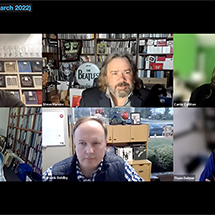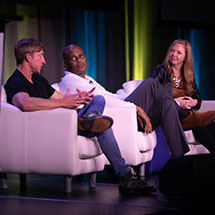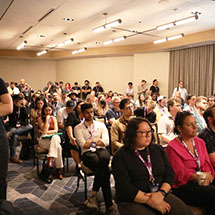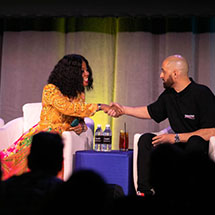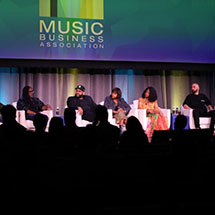
[Keeping Tempo With Music Biz] — Why Scoring Concert Tickets Is Actually Getting Better: Op-Ed by Tradable Bits’ Geoff Robins

There’s no sugarcoating it—getting tickets to in-demand concerts like Taylor Swift, Beyoncé, Kendrick Lamar, SZA, or Olivia Rodrigo can be stress-inducing. Like millions of other parents, few moments have crushed me more than having to tell my tween daughters: No, we didn’t get tickets to the Eras Tour.
Ticket buying has always been a rollercoaster of hope and heartbreak. It’s a classic case of limited supply vs. overwhelming demand. A typical arena holds just 15,000 to 20,000 seats. At an average order of four tickets per customer, that’s only about 5,000 buyers per show, a tiny fraction of the fanbase in any major city.
While today’s process may seem chaotic, it’s actually far more efficient than it used to be. Not long ago, buying tickets meant waiting in line for hours outside record stores, often camping overnight, just for a chance to purchase. In the ’70s and beyond, phone sales offered a slightly more convenient option but not without frustration. You’d dial into Ticketmaster, BASS, Ticketron, or the venue’s box office, hoping to beat out busy signals and callbanks–rooms full of people redialing nonstop to snatch up tickets for resale. And of course, all tickets were paper. You either picked them up in person or waited for them to arrive by mail. If you lost one, that was it.
The digital era didn’t eliminate the chaos, it just changed its shape. Bots are the modern equivalent of callbanks, and their scale is massive. In 2024, Ticketmaster reported blocking over 200 million bot attempts per day, totaling more than 53 billion annually, a fivefold increase since 2019. But despite the headlines and horror stories, ticketing is actually improving behind the scenes. Technology is working hard to make access more equitable, secure, and fan-friendly. Here are a few ways technology is making ticketing better.
Smarter Filtering with AI and Fan Verification
To combat bots and scalpers, ticketing platforms now use AI and machine learning to detect abnormal buying patterns. CAPTCHAs, device fingerprinting, and fan verification systems slow down bad actors and screen for real fans. Advance Fan Registration, used widely for major tours, pre-screens fans based on location, behavior, and account history. Verified fans receive unique, non-transferable access codes tied to a single device, drastically reducing scalper interference.
Gated Access and Virtual Waiting Rooms
Virtual queues throttle demand and reduce the pressure to rush. Geo-fenced sales prioritize local fans by limiting access based on location, helping artists serve core audiences while making it harder for bots operating from afar to interfere.
Ballots, Presales & Second Chances
Ballot systems, fan club presales, and waitlists are replacing the first-come-first-served chaos with more orderly, data-informed systems. Today’s tools mimic the fairness of the old bingo-ball lotteries that once determined physical line order and go further by offering second-chance opportunities for waitlisted fans as more tickets become available.
More Transparency for Fans
AI now powers real-time updates that estimate wait times and the likelihood of securing tickets. These small but meaningful features help fans stay informed and make smarter decisions during high-stakes on-sales.
Digital-First = Safer, Smarter Tickets
Mobile ticketing is now the norm. Whether through app delivery or blockchain-secured NFTs, tickets are safer and harder to counterfeit. Delaying ticket delivery until closer to the event narrows the resale window and protects against scalpers. Some platforms also enforce price caps or artist royalties on resales—putting control back in the hands of creators and fans.
It’s Not Perfect, but It Is Progress
Today’s ticketing landscape is far from flawless. Technologies have made buying tickets easier and more secure for fans and have also empowered scalpers to evolve. Instead of paying people to stand in line or jam phone banks, resellers now deploy sophisticated bots and automated software to scoop up tickets at scale. It’s become a high-tech arms race with platforms racing to outsmart increasingly advanced threats.
Takeaways
As bots become more sophisticated and the money at stake grows with the unprecedented popularity of live music, the scramble for tickets isn’t going to slow down. However, the days of mass on-sales that crash systems with overwhelming traffic and no controls for identifying fans are coming to an end. The focus on understanding who the fan is—and verifying their fandom—will remain central to ensuring that true fans gain access to limited ticket supply. Expect to see more “true fan” verification technology introduced in ticketing to help genuine fans attend the shows.
In the end, the evolution of ticketing is about more than just fighting bots—it’s about preserving the connection between artists and the communities who support them. As technology continues to advance, the industry will need to balance security, fairness, and fan experience to keep live music thriving for everyone.
Written by Geoff Robins, Vice President, Product and Marketing, Tradable Bits, and former Senior Vice President, Marketing, Live Nation Canada.
You can read past Keeping Tempo articles via the portal linked here. And, stay tuned for more insightful discussions from our members and partners from across the industry!

